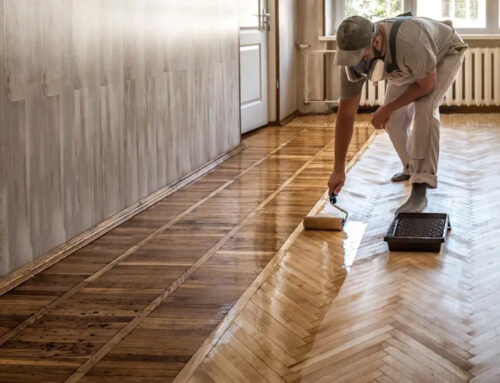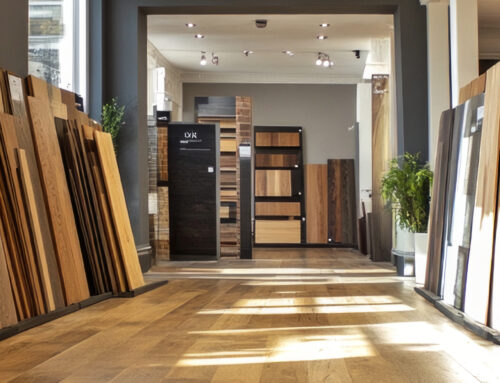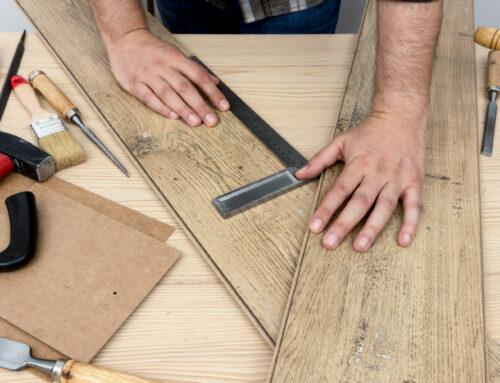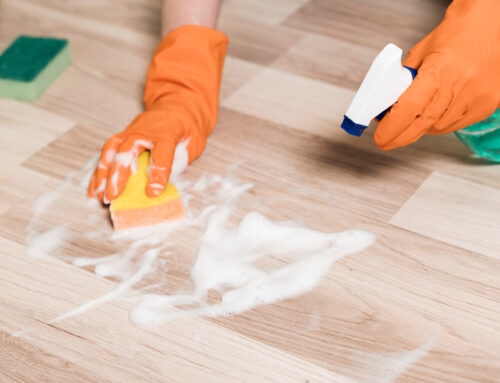Wood floors look amazing, but they can be temperamental. At thousands of dollars to install, they count as a serious investment and nothing ruins them faster than excess moisture.
Notice how wooden doors sometimes stick during humid months? Wood naturally absorbs moisture and changes shape. Each season puts your floors through a cycle of expansion and contraction. Rain in spring, humidity in summer, dry air in fall, and indoor heating in winter all affect those beautiful boards.
When moisture levels climb too high, trouble starts. Boards begin cupping at the edges. Sections warp and buckle. Worse yet, mold might be growing underneath where you can’t even see the damage happening.
After testing dozens of models with wood floor protection as the main focus, these seven stood out. From basements to whole-house systems, these options keep floors stable without cranking up your electric bill or drowning out conversations.
Why Do Your Hardwood Floors Need Protection?
The Humidity Sweet Spot
hardwood flooring stay happy when indoor humidity hovers between 35% and 55%. When levels drift outside this range, problems follow:
- Above 55%: Floors absorb extra moisture, swell, and warp
- Below 35%: Wood shrinks, creating gaps between boards
- At either extreme: Damage typically remains even after humidity normalizes
The worst scenarios lead to complete warping, with boards twisting out of shape.
Beyond Refinishing
Many homeowners discover too late that water damage runs deeper than surface issues. Deep warping affects the entire board structure. Once that happens, replacement becomes the only fix, an expensive one at that. Flooring companies typically charge thousands to replace damaged sections, plus the headache of moving furniture and losing access to rooms during repairs.
Water problems bring unwelcome guests. Mold thrives in damp, dark spaces beneath warped boards, threatening both your floors and your family’s health.
Benefits Beyond Protection
A quality dehumidifier improves your entire living space:
- Eliminates musty smells that linger in damp environments
- Creates lighter, more comfortable air during humid months
- Reduces allergens as mold and dust mites struggle to survive
- Transforms basements from damp caves to usable spaces
- Prevents bathroom dampness and kitchen moisture buildup
Top 7 Best Hardwood Floor Dehumidifier
1. Midea Cube 35-Pint
The Midea Cube outperformed 34 competing high-capacity units. Its clever collapsible design saves valuable storage space during dry months when you don’t need it running.
Performance-wise, it tackles serious moisture problems quickly, dropping room humidity from 90% to 40% in about 8 minutes. A fast response prevents those dangerous spikes that damage wood overnight.
Running on just 512 watts keeps electricity costs reasonable. Quiet operation makes it suitable for living rooms and bedrooms where noise matters.
2. TCL 50-Pint Smart
Perfect for tech-savvy homes, the TCL smart model connects with existing home automation, working smoothly with Alexa and Google Assistant. Control it through voice commands or schedule routines through your smart home hub.
Basement installations benefit from auto-defrost capability, keeping the unit working efficiently even when temperatures drop to 41°F. Standard models often fail in cooler environments, but this TCL keeps going through seasonal changes.
3. Frigidaire 35-Pint
Small but mighty, this compact Frigidaire delivers surprising performance despite its modest size. Works perfectly in bedrooms, offices, and smaller living spaces.
Smart design touches make daily use easier. The front-loading water bucket includes comfortable handles and a splash guard that prevents spills. While continuous drainage remains an option, users appreciate how the thoughtful bucket design makes manual emptying less of a chore.
4. Whynter Energy Star Portable with Pump
Larger homes with extensive wood flooring need serious protection. The Whynter RPD-506EWP handles spaces up to 4,000 square feet while removing 50 pints of water daily, a capacity that matters in open floor plans spanning multiple rooms.
The built-in pump system stands out from basic models. It’s a 16.5-foot hose that routes water upward into sinks, out windows, or to distant drains without manual work. Once configured, you can basically forget about it for months of nonstop protection.
5. HomeLabs 50-Pint
With nearly 40,000 positive customer reviews, the hOmeLabs model ranks among the most trusted options available. Its modern design blends into contemporary homes without looking like utilitarian equipment.
The intuitive control panel features a continuous 24-hour cycle option, ideal for very humid environments or during particularly damp seasons. Its turbo mode increases fan speed to handle sudden moisture spikes after showers, cooking, or rainy days.
6. LG PuriCare 50-Pint
LG brings its reliability reputation to moisture control with this sleek unit. The built-in pump offers versatile drainage options and eliminates the need for manual tank emptying.
The standout feature? A unique Safety Standby Mode automatically powers down the compressor but keeps the fan running when the tank approaches capacity, preventing overflow accidents if you’re away when it fills up.
7. Hisense 50-Pint
Hisense delivers exceptional value with features typically found in pricier models. Its ultra-quiet operation registers at just 42 decibels on low settings—about the sound level of a library.
Users particularly appreciate the detailed digital readout that shows both current and target humidity levels simultaneously, making it easy to monitor effectiveness at a glance. The washable filter indicator reminds you when maintenance is due.
Choosing Dehumidifier For Wood Floors: What Matters The Most?
Size Matters
Match capacity to your space. Large units like TCL cover up to 4,500 square feet, while compact models like Eva-Dry work best in areas around 225 square feet. Picking the wrong means either inadequate drying or wasted power.
Daily Moisture Removal
Areas with substantial water problems need units removing 50 pints daily. Spaces with minor issues might only need 20-35 pint models. Consider seasonal weather patterns when deciding.
Drainage Options
Consider your maintenance preferences:
- Manual emptying: Works if you regularly check and empty the tank
- Gravity drainage: A Simple solution when floor drains sit nearby
- Built-in pump systems: Allow water to flow upward into sinks or out of windows
- Continuous operation: Models like Whynter excel at running unattended
Energy Efficiency
Look for Energy Star certification to lower running costs. The Midea Cube offers superior efficiency that saves on electric bills during extended operation. These savings accumulate significantly over the years of use.
Noise Level
For bedrooms or living areas, quieter models make sense. The Midea Cube runs surprisingly silently despite its power. Check decibel ratings when buying for noise-sensitive spaces.
Installation Tips for Best Results
Where to Place It
Put your unit centrally in rooms with wood floors. Avoid pushing against walls or behind furniture that blocks airflow. In multi-story homes, focus on the lower floors first since moisture rises and can damage upper levels.
Keep at least 6-12 inches of clearance around the unit for proper circulation. In open layouts, position where air naturally flows between spaces for better coverage.
Optimal Settings
Start at 45% humidity and adjust based on your home. During rainy seasons:
- Empty collection tanks more often
- Consider setting up continuous drainage
- Monitor during the first week of operation
- Watch the condensation buildup to plan your maintenance routine
Most machines shut off automatically when full, but checking regularly helps determine if manual emptying works for your situation.
Simple Maintenance
Clean filters every 2-4 weeks when running frequently. Dirty filters:
- Cut efficiency dramatically
- Force the machine to work harder
- Shorten appliance lifespan
- Decreased moisture removal performance
Most filters wash easily under tap water and should dry completely before reinstalling.
Ending Note
The right hardwood floor dehumidifier prevents floor damage while creating a more comfortable home environment. Any of these seven models will give your floors the best results when properly sized and positioned.
Floor protection specialists are available for your service at Rustic Wood Floor Supply. Our experts will help you about which solution or floor type might work best for your specific home needs. Reach out to us today!
Frequently Asked Questions
How often should I clean my dehumidifier when using it to protect hardwood floors?
For units with continuous drainage, check hose connections about four times yearly to prevent leaks that could damage the very floors you aim to protect.
What is a Hardwood Floor Dehumidifier?
A hardwood floor dehumidifier is a device that reduces indoor humidity to prevent wood floors from warping, cupping, and moisture damage.
Will using a hardwood floor dehumidifier increase my electric bill significantly?
Energy-efficient models like the Midea Cube consume surprisingly little power.
How do I know if my hardwood floors are already damaged by humidity?
Watch for subtle warning signs. Musty smells often indicate hidden moisture problems.
Should I run my dehumidifier year-round to protect my hardwood floors?
Get an inexpensive hygrometer to monitor your indoor humidity levels. When readings stay consistently above 55%, run your dehumidifier until levels stabilize.
Author Profile
- I have worked in hardwood flooring for the last 8 years. Use to run a company of residential crews as well as a company with gym flooring. If you need floor installation or refinishing help, I should have an answer or at least get you in the right direction.
Latest entries
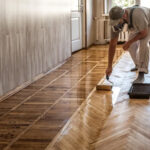 FlooringDecember 10, 2025Wood Floor Restoration in Atlanta: What Affects the Cost
FlooringDecember 10, 2025Wood Floor Restoration in Atlanta: What Affects the Cost FlooringDecember 8, 2025Top 6 Wholesale Hardwood Flooring Solutions for Your Home & Office – Boise, ID
FlooringDecember 8, 2025Top 6 Wholesale Hardwood Flooring Solutions for Your Home & Office – Boise, ID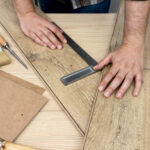 FlooringNovember 25, 2025What Engineered Hardwood Flooring Will Last Longest?
FlooringNovember 25, 2025What Engineered Hardwood Flooring Will Last Longest?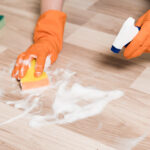 FlooringNovember 22, 2025Best Wood Floor Cleaner Liquid for Hardwood Flooring
FlooringNovember 22, 2025Best Wood Floor Cleaner Liquid for Hardwood Flooring

